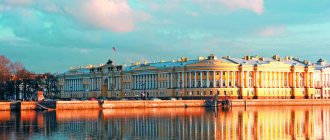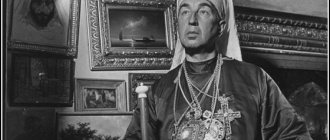Russian Orthodox Church
The document was adopted by the Council of Bishops of the Russian Orthodox Church on February 5, 2013.
1. The Council of Bishops elects candidates to the Moscow Patriarchal throne by secret ballot.
2. All bishops of the Russian Orthodox Church who meet the criteria provided for by the Charter of the Russian Orthodox Church for candidates for the Patriarchal Throne are included in the ballot for electing candidates to the Moscow Patriarchal Throne. The Holy Synod is responsible for compiling such a list of bishops.
3. Before the start of voting, the chairman of the counting commission, in the presence of members of the commission, checks the condition of the ballot boxes and seals them with the seal of the counting commission.
4. Voting papers are issued by the counting commission against the signature of each participant, upon presentation of the participant’s identification card.
The ballot consists of laced, numbered and sealed sheets containing a complete list of possible candidates for the Moscow Patriarchal throne, with space for putting a sign next to each name.
The Counting Commission is responsible for counting the issued ballots.
5. Voting takes place by placing any sign next to the name of the candidate for whom the vote is cast.
The ballot is considered invalid in the following cases:
1) if more than one name is marked on the ballot;
2) if no name is marked on the ballot;
3) if one or more sheets are missing from the ballot.
6. Counting commission:
1) checks the number of ballots in the ballot boxes with the number of issued ballots and identifies invalid ballots;
2) carries out the counting of votes by passing each ballot through each member of the counting commission, starting with the youngest, ending with the chairman;
3) draws up a protocol on the voting results in each round.
7. In case of an error when filling out a ballot, a member of the Council has the right to contact the counting commission to replace the ballot; in this case, the damaged ballot is handed over to the counting commission, canceled by its chairman and a new ballot is issued, about which an act is drawn up.
8. The three bishops who receive the largest number of votes expressed on valid ballots are considered the elected candidates.
If in the first round of voting several candidates received an equal number of votes and this does not make it possible to determine the three elected, a repeat vote is held for those who received an equal number of votes.
9. Those elected have the right to recuse themselves. In this case, the list of candidates is replenished by including the following (based on the number of votes received in the first round) bishops.
If all three candidates recuse themselves, a repeat vote will be held.
10. The voting results are presented to the Local Council, which opens no later than on the third day after the nomination of candidates for the Patriarchal throne.
11. The Locum Tenens of the Patriarchal Throne presides at the Local Council.
12. Members of the Local Council may nominate an additional candidate for the Moscow Patriarchal throne with a statement from at least 1/4 of their members. Such a bishop must meet the criteria provided for by the Charter of the Russian Orthodox Church for candidates for the Patriarchal throne. To include him among the candidates for the Moscow Patriarchal throne, a secret vote is held. The bishop who receives at least a third of the votes expressed on the valid ballots is included in the list of candidates.
13. Members of the Council by secret ballot elect from among the candidates the Patriarch of Moscow and All Rus', according to the following procedure:
1) before the start of voting, the chairman of the counting commission, in the presence of members of the commission, checks the condition of the ballot boxes and seals them with the seal of the counting commission;
2) ballot papers are issued by the counting commission against signature, upon presentation of an ID card of a member of the Council; the ballot contains a list of hierarchs nominated for voting, with space for putting a sign next to each name; the ballot is sealed by the counting commission; the counting commission is responsible for counting the issued ballots;
3) the ballot is considered invalid in the following cases:
a. if more than one name is marked on the ballot;
b. if no name is marked on the ballot;
4) counting commission:
a. checks the number of ballots in the ballot boxes with the number of issued ballots and determines the validity of the ballots;
b. carries out the counting of votes by passing each ballot through each member of the counting commission, starting with the youngest and ending with the chairman;
c. draws up a protocol on the voting results in each round;
5) in the event of an error when filling out a ballot, a member of the Council has the right to contact the counting commission to replace the ballot; in this case, the damaged ballot is handed over to the counting commission, canceled by its chairman, and a new ballot is issued to the delegate, about which a report is drawn up.
14. When voting in the first round, the elected Patriarch is the bishop who receives more than half of the number of votes cast, expressed in valid ballots.
If none of the candidates received more than half of the votes in the first round of voting, a repeat vote is held on the two candidates who received the most votes in the first round of voting. The elected Patriarch is the bishop who receives the largest number of votes expressed in valid ballots.
If in the second round of voting both candidates received an equal number of votes, the Patriarch is elected by lot from these two candidates, in accordance with the procedure established by the Local Council.
15. Candidates for the Moscow Patriarchal throne have the right to recuse themselves at any stage of voting, as well as in the event of election, which is assumed in the formula of questioning the elected candidate: “The Most Reverend Name of the Local Council of the Russian Orthodox Church has elected you Patriarch of Moscow and All Rus'; Do you accept this election?
16. If, as a result of self-recusal, one candidate remains, then, by decision of the Local Council, the bishops present at it, who have the right to vote at the Council of Bishops, elect at least one more candidate by secret ballot. Such a bishop must meet the criteria provided for by the Charter of the Russian Orthodox Church for candidates for the Patriarchal throne. If the Local Council refuses to nominate another candidate, then a vote is taken on the only candidate. A single candidate is considered elected to the Patriarchal throne if more than half of the valid ballots were cast in his favor. If there is only one candidate, the ballot paper has fields for putting in “for” and “against” signs.
17. Public discussion of candidates during meetings of the Council is excluded.
In close contact with the authorities
At the end of November 1944, a Council of Bishops was held in the building of the Patriarchate (Chisty Lane, 5) with the participation of fifty bishops. Metropolitan Alexy in his speech described the situation of the Russian Orthodox Church as follows: “Conditions for the development of church life are favorable, from our government we see full support in our church and patriotic endeavors. Over the past year, more than 200 churches have been opened throughout our Union; all requests for the opening of churches are carefully considered; this matter continues and will continue in the future.”5
The Council of Bishops approved the program of the upcoming Local Council and the procedure for electing the patriarch: each of the bishops, on his own behalf, the clergy and flock of his diocese, had to name the name of the chosen one. The participants of the Council were received by G.G. Karpov.
In an effort to contribute as much as possible to the successful holding of the Local Council, the Council for the Affairs of the Russian Orthodox Church, already in the first days of the new year, 1945, was included in the Council of People's Commissars of the USSR with the idea of opening 27 new churches and 4 houses of prayer in the Bashkir, Dagestan, Mari, North Ossetian, Udmurt autonomous republics, in the regions of Arkhangelsk, Astrakhan, Voronezh, Kirov, Kursk, Omsk, Penza, Rostov, Tambov, Tula, Chelyabinsk, Chkalov, as well as in the Krasnodar Territory6. At the same time, Karpov raised with the Government the question of allowing bell ringing in churches located in territories that were not subject to occupation. Soon this issue was resolved positively (see document 4) . And two weeks before the opening of the Cathedral, Karpov in a memorandum by V.M. Molotov once again requested and received additional clarification on the fundamental issues of organizing and holding the council (see document 5-6) .
Deputy Chairman of the Council of People's Commissars of the USSR V.M. Molotov.
We are special
According to statistics, in Russia 80 percent of citizens call themselves Orthodox. And only about five percent observe fasts and constantly go to church. But this is not surprising: Russians associate themselves with Orthodoxy not only in religious, but also in cultural and historical senses. Over a thousand years, Eastern Christianity has created a special civilization in Russia. That is why we are the largest and greatest country on the planet! Orthodoxy has always been and is one of the most powerful signs of Russian identity.
The Cathedral of Christ the Savior is the main shrine of the country. Photo: Legion-media.ru
Think about it!
- The number of churches in the United States is ten times greater than the number of churches in Russia. There are 270 thousand of them there. There are 15 thousand Mormons alone.
By the way
- There are about 40 thousand churches in the Russian Church of the Moscow Patriarchate. Of these, only 44 percent (17 thousand) are in Russia, and the rest are in Ukraine, Kazakhstan, Moldova and about 100 other countries, including Japan, China and Ethiopia.
- For 33 million people living in Russian large cities, there are only 2,756 operating churches. Throughout Ukraine, with approximately the same population - 13 thousand. That is, the majority of Russian churches are located not in large, but in small cities and villages.
Vitaly Kim
#26/2020 faith Russian Orthodox Church
How to become the head of the UOC MP
On August 13, the head of the Ukrainian Orthodox Church of the Moscow Patriarchate is elected in Kyiv. Komsomolskaya Pravda in Ukraine found out how many steps of the church ladder one needs to go through to earn such a high title.
First - to the seminary
In Orthodoxy there are three degrees of priesthood. And only after going through all of them - from the very bottom - can you become the Primate of the church.
It all starts with theological seminary, where they study for 4 years. By the way, you can go there not only after school - the upper age limit is 35 years. True, only men of the Orthodox faith are accepted.
“During his studies, the seminarian must make a choice - whether he wants to belong to the black or white clergy,” says religious scholar Taras Borozenets. “You can get married in white, but you can’t hold a position higher than a priest.” But in black you need to become a monk, but you can reach the highest church ranks.
Therefore, all metropolitans, like the Primate of the church, at one time became monks and adhere to celibacy.
Deacons, priests and bishops
Former seminarians can already be ordained deacons (ordination is a secret ceremony of initiation into a new rank), or they can continue their studies at the Theological Academy. By the way, only those seminary graduates who do not have C grades in their certificates are accepted there. Men under 35 years old are also accepted there. This is a kind of spiritual magistracy.
They begin to serve from the lowest rank - deacon. In the white clergy, these are assistant priests who do not have the right to conduct the sacraments of Baptism, weddings, etc., in the black clergy, they are ministers in monasteries. After some time (always different and determined by merit), the deacon is ordained as a priest and entrusted with the parish (in the white clergy). In black the next steps are hieromonk, abbot and archimandrite.
The decision on a new rank is made by the bishop. But in order to lead a diocese and become this same bishop, you need the approval and permission of at least three other bishops. By the way, representatives of the white clergy can become bishops only if they take monastic vows, and their wives either die or become nuns. Moreover, it is imperative that the monastery is located in another diocese, and the spouses do not see each other.
A bishop can become an archbishop, and he can already become a metropolitan. And if a bishop is in charge of a diocese, then a metropolitan is in charge of a metropolitan area - an ecclesiastical region.
The most respected metropolitans and bishops are members of the Holy Synod of the UOC - a kind of church parliament. Most often, it is the members of the Holy Synod who become the new Primates. Of course, only when the previous Primate either rested in peace or retired due to health. Or, which happens extremely rarely, he was removed by the Church Court for violating the canons or committing some crime.
No. 4. Internal note by G.G. Karpov on the production of bell ringing
N 7/s January 10, 1945
Secret
Council of People's Commissars of the USSR
T.V.M. Molotov
In the western regions of Ukraine and Belarus, as well as in the Estonian, Latvian and Lithuanian SSR, the ringing of bells in churches, which did not stop before the war, continues to this day.
In a number of regions that were subject to temporary German occupation, such as in some regions of Ukraine, as well as in the Kursk, Bryansk and Leningrad regions, bell ringing, which resumed during the occupation, is also carried out at the present time.
Throughout the rest of the territory of the Union, bells are not ringing in churches and were stopped at different times, approximately from 1927 to 1937.
The Council receives applications from groups of believers in Orthodox parishes, mainly from areas bordering the territory subject to occupation, asking for permission to ring bells in churches.
The Council for the Affairs of the Russian Orthodox Church under the Council of People's Commissars of the USSR finds it possible to allow the ringing of bells in churches everywhere.
Presenting the draft order of the Council of People's Commissars of the USSR, the Council asks for your instructions.
Appendix: according to the text.
Chairman of the Council for the Affairs of the Russian Orthodox Church under the Council of People's Commissars of the USSR G.G. Karpov
Note: “Archive. Allowed. I. Lapshev. 5/IX. 45".
RGASPI. F. 82. Op. 2. D. 499. L. 35.
Script. Typewritten text.
Signature - autograph of G.G. Karpova.
Veliky Novgorod after liberation from the Nazi invaders. 1944 Photo: RIA Novosti




